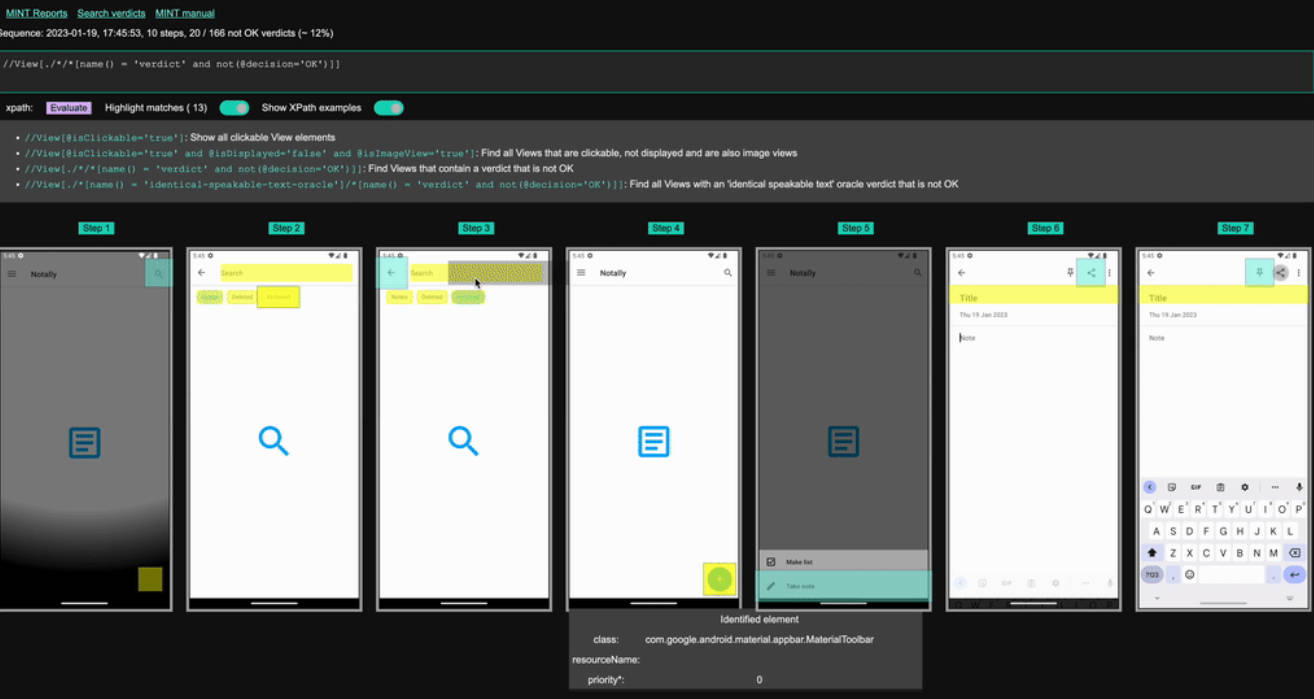Road to effective snapshot testing
A sample repo describing best practices for snapshot testing on Android. This includes for now:
- Parameterized Tests: Write the test once and run it under all desired configurations. This includes snapshot tests under various Font sizes
- Filtered Parameterized Tests: Create filters to group the configurations, so that we can run only the tests corresponding to a certain group. As described later in this ReadMe, this can be useful when having a large bunch of snapshot tests, in order to reduce building times. That way we can select to run a group of them on every PR (e.g. the essential ones), and the rest once a day.
The code here will reflect everything discussed on my series on snapshot testing
All the samples use Shot from Karumi, what is a great library that facilitates
snasphot testing.
I've been using an emulator with API 23 for a matter of simplicity. That is because Shot requires less
configuration for API < 29.
Parameterized Snapshot Tests
They enable us to test a given view with all possible different configurations, namely:
- Theme (Light and Dark)
- Font Size
- Languages
- View dimensions (width and height)
- Specific view states
- Others...
With Parameterized snapshot test we can write the test once and run it for all the desired configurations!
This can be achieved by using org.junit.runners.Parameterized as in the example below.
- Create a
TestItemwhich encapsulates all the info we want to inject as parameter. I strongly
recommend to add a testName to it, which must be unique among all tests. This is used to distinguish
each snapshot file from the rest.
- Write the method that inflates the view and takes/compares the screenshot. Use the parameters from
TestItemto set the view into the right state.
If you also want to enable differentFont sizeconfigurations to your tests, you can add the
FontSizeTestRule library to your project. For example,
you can use theFontSizeActivityScenarioas follows:
- Finally, we need to add the parameters. We will use
org.junit.runners.Parameterizedfor that.
We will pass theTestItemin the class constructor, and define each single configuration to be run
inside a method annotated with@Parameterized.Parameters.
Now you can just run your test with ./gradlew executeScreenshotTests -Precord and you should see the
results!
Filter Parameterized Tests
Running snapshot tests for all configurations on every PR can be very time-consuming and lead to
incrementally slower builds. One approach to solve that issue is to run only a part of those tests
on every PR (e.g. the most common config, our "smoke" tests) and all snapshot tests - or "all non-smoke
tests" - once a day (e.g. during the night or whenever it disturbs your team the least).
In doing so, we get informed of the most important visual regression bugs on every PR (i.e. blocking bugs),
and still get notified of the non-blocking bugs once a day.
We can accomplish this by filtering our tests with
-Pandroid.testInstrumentationRunnerArguments.annotation=com.your.package.YourAnnotation
or
-Pandroid.testInstrumentationRunnerArguments.notAnnotation=com.your.package.YourAnnotation
Warning: These arguments are supported by org.junit.runners.Parameterized, but not by all runners,
e.g. JUnitParams fails if used.
So first of all, we need to create our annotation
And then we add another Test Class that reuses our previously defined TestItem and snapDeleteDialog(testItem)
containing the "most common config" parameters, like here below
Take a look at DelegateDialogTest.kt to see how these Parameterized Tests are implemented and run
./gradlew executeScreenshotTests -Precord -Pandroid.testInstrumentationRunnerArguments.annotation=com.example.road.to.effective.snapshot.testing.utils.SmokeTest
to verify that only the @SmokeTest runs!
What is coming next:
- More advance samples
- Tips to remove flakiness
- Tips to increase test execution speed
- Jetpack compose samples
and more...
https://github.com/sergio-sastre/RoadToEffectiveSnapshotTesting

